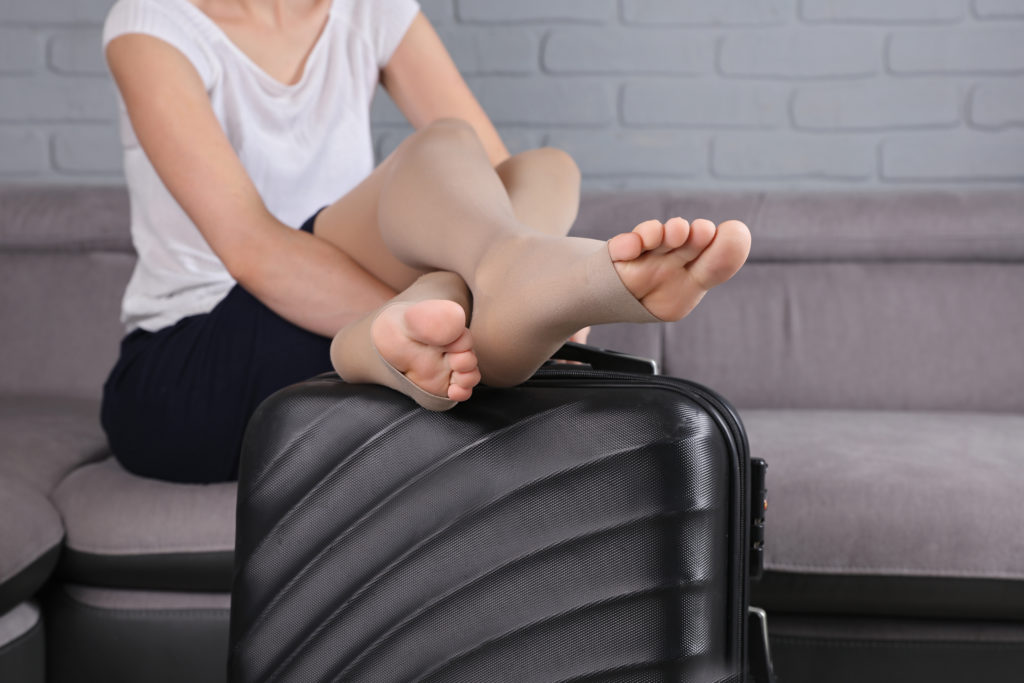Yesterday, the Emmy award-winning television show, Dr. Oz featured information about blood clots in the veins, specifically, deep venous thrombosis (DVT). He demonstrated how they can break off and travel to the heart and lungs. But, what was missing from this segment was more information about what causes DVT and how can you prevent them.
What are some of the most common causes of DVT?
DVT: There are many causes of DVT. You can categorize these into three main groups. (Medically, these 3 risk factors for DVT are collectively called Virchow’s Triad)
A) Decreased movement of blood (venous stasis),
- Decreased movement of blood can be caused by immobilization: sedentary, prolonged sitting, long plane flights or car trips, or post-surgery being inactive, and bed rest like in hospitals or nursing homes. This is where compression is crucial to preventing blood clots since the external compression increases the venous return back to the heart and reduces pooling. Venous insufficiency allows blood to pool.
B) Increased tendency to clot (hypercoagulability)
- Temporary conditions such as pregnancy, cancer and obesity cause the blood to become hypercoagulable. The use of oral contraceptives, estrogens hormone replacement, testosterone, increase the risk of blood clots.
- The likelihood of a blood clot during pregnancy is 5-20 for every 10,000 women.
- The likelihood of a blood clot post partum is 40-65 for every 10,000 women.
- Genetic conditions that are inherited can increase the risk of blood clots. For example, Factor V Leiden and antiphospholipid antibody. 5% of the population carry one copy of the Factor V Leiden mutation.
C) Damage to the blood vessel wall
- Trauma, injury to the leg, surgery
What can you do to prevent DVT?
Stay moving, avoid prolonged sitting. For example, when flying or traveling, the risk of DVT is 1% on a long haul flight (greater than 6 hours). To minimize this risk, you should wear compression stockings (which helps increase the blood flow in the legs), stay hydrated, avoid excessive alcohol, use the calf muscles- walk about the cabin and frequently pump the calf muscles by doing foot lifts.
During pregnancy, compression stockings should be worn and after pregnancy, when the risk of DVT is highest (the likelihood of a blood clot post partum is 40-65 for every 10,000 women).
Your doctor can recommend to you what type of compression socks to use. For more information about compression socks, go to compressrx.com.




